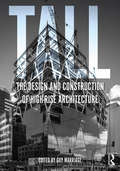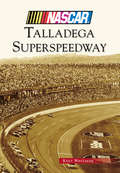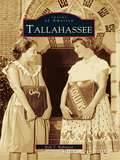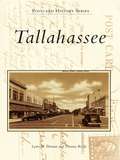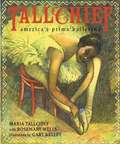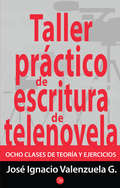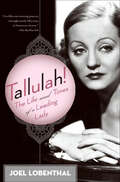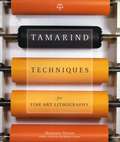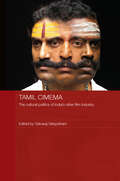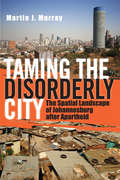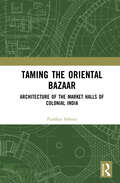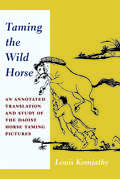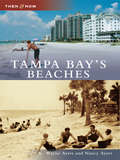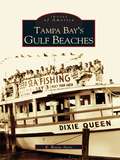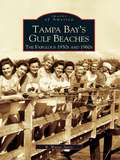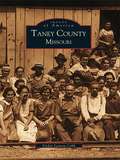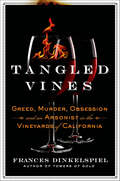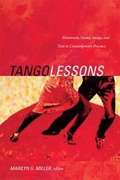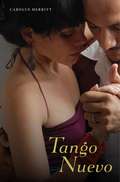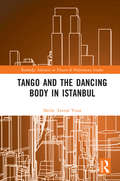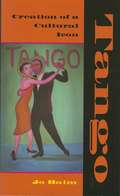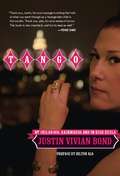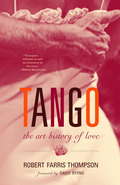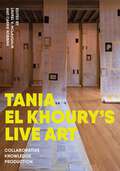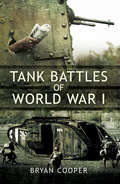- Table View
- List View
Tall: the design and construction of high-rise architecture
by John Sutherland Guy Marriage Nabil Jose Allaf Gerard Finch Lauren HayesThis is a guide to both the basics and the details of tall building design, delving into the rudimentary aspects of design that an architect of a tall office building must consider, as well as looking at the rationale for why and how a building must be built the way it is. Liberally illustrated with clear, simple black and white illustrations showing how the building structure and details can be built, this book greatly assists the reader in their understanding of the building process for a modern office tower. It breaks down the building into three main components: the structure, the core and the facade, writing about them and illustrating them in a simple-to-understand manner. By focusing on the nuts and bolts of real-life design and construction, it provides a practical guide and desk-reference to any architect or architecture student embarking on a tall building project.
Talladega Superspeedway
by Kent WhitakerOriginally named Alabama International Motor Speedway, Talladega Superspeedway was built on the site of a World War II-era Air Force base in the heart of Alabama. NASCAR founder Bill France and his family envisioned a race track that would be faster, larger, and more exciting than any track built to date. Construction began on May 23, 1968, and was completed on September 13, 1969. The end result is the most modern speedway ever built. Often simply referred to as "Dega," the track is 2.66 miles long, its high-banked turns are nearly three stories tall, and race cars have reached speeds over 200 miles per hour. It is so popular that it is said to become one of the largest "temporary" cities in the state every race weekend.
Tallahassee (Images of America)
by Erik T. RobinsonLocated in the rolling hills of Florida's Panhandle, Tallahassee has long stood as a capital city. It has been home to prehistoric Native Americans, who built the Lake Jackson Mounds in the 13th century; the Apalachee Indians, who learned to live with the Spanish Mission in the 17th century; and to European settlers and the American residents of today. Tallahassee's tree-lined, canopied roads and bountiful dogwoods and azaleas have always been associated with the leadership and history of the state. The presence of institutions such as Florida State University and Florida A&M have also made Tallahassee an attractive center of higher learning and diversity. Throughout prosperity and adversity, both Tallahassee's population and complexity have continued to increase. Combining historic landmarks, such as the San Luis Archaeological Site and the Old City, and new neighborhoods, such as Frenchtown and Lafayette Park, the capital city is a unique representation of Florida, from its days as a territory to its status as one of the country's most visited states.
Tallahassee (Postcard History)
by Lynn M. Homan Thomas Reilly"Hope you are having as nice weather as we are. It and the people are grand." Tourists enjoying their Florida vacation might have written that message. Perhaps an elected official at the state capitol during a legislative session penned the sentiment. Maybe a student attending one of Tallahassee's several colleges intended to reassure anxious parents back home. Written on a postcard from Tallahassee in 1908, the words, whatever their purpose, still hold true.
Tallchief: America's Prima Ballerina
by Rosemary Wells Maria TallchiefMusic flowed through young Maria Tallchief as naturally as the wind in her hair. She had only to hear a melody and out it came under her fingers on the piano or through her body in dance. When she was twelve her father told her that she would have to choose between piano and dance. "One or the other", he said, "but follow that one star". So Maria chose from the heart -- and she chose dance. It was a decision that would change not only the course of her life but the face of classical ballet in America forever. From her early years on an Osage Indian reservation in Oklahoma to her departure for New York, where her professional career was launched, the fascinating story of Maria Tallchief's rise to America's prima ballerina is sure to captivate the hearts of young readers and dance lovers alike.
Taller práctico de escritura de telenovela: Ocho clases de teoría y ejercicios
by José Ignacio ValenzuelaManual de José Ignacio Valenzuela para la realización de telenovelas. De Ignacio Valenzuela, seleccionado por la revista About.com de The New York Times como uno de los 10 mejores escritores latinoamericanos menores de 40 años, cuenta con varios libros juveniles publicados de corte policiaco. Su novela Malamor fue postulada al Premio Altazor. Una herramienta para comprender mejor qué son las telenovelas. Con claridad en la exposición y afán didáctico el novelista y afamado escritor de telenovelas José Ignacio Valenzuela nos muestra a través de ocho clases prácticas con conceptos y ejemplos reales, los entresijos de la creación del género televisivo de más éxito global. Además nos ofrece un práctico glosario de términos, una bibliografía muy completa, una serie de links de interés, así como un listado de todas las telenovelas mencionadas. A modo de manual con varios ejercicios y de forma ágil, el autor muestra el cómo y el porqué de las telenovelas, cuáles son sus diferencias, cómo ha sido su evolución, hacia dónde va un género que ha sido parte de nuestra educación sentimental y es el único entretenimiento de millones de personas en todo el mundo.
Tallulah!: The Life and Times of a Leading Lady
by Joel LobenthalOutrageous, outspoken, and uninhibited, Tallulah Bankhead was an actress known as much for her vices -- cocaine, alcohol, hysterical tirades, and scandalous affairs with both men and women -- as she was for her winning performances on stage. In 1917, a fifteen-year-old Bankhead boldly left her established Alabama political family and fled to New York City to sate her relentless need for attention and become a star. Five years later, she crossed the Atlantic, immediately taking her place as a fixture in British society and the most popular actress in London's West End. By the time she returned to America in the 1930s, she was infamous for throwing marathon parties, bedding her favorite costars, and neglecting to keep her escapades a secret from the press. At times, her notoriety distracted her audience from her formidable talent and achievements on stage and dampened the critical re-sponse to her work. As Bankhead herself put it, "they like me to 'Tallulah,' you know -- dance and sing and romp and fluff my hair and play reckless parts." Still, her reputation as a wild, witty, over-the-top leading lady persisted until the end of her life at the age of sixty-six.From her friendships with such entertainment luminaries as Tennessee Williams, Estelle Winwood, Billie Holiday, Noël Coward, and Marlene Dietrich, to the intimate details of her family relationships and her string of doomed romances, Joel Lobenthal has captured the private essence of the most public star during theater's golden age. Larger-than-life as she was, friends saw through Bankhead's veneer of humor and high times to the heart of a woman who often felt second-best in her father's eyes, who longed for the children she was unableto bear, and who forced herself into the spotlight to hide her deep-seated insecurities.Drawn from scores of exclusive interviews, as well as previously untapped information from Scotland Yard and the FBI, this is the essential biography of Tallulah Bankhead. Having spent twenty-five years researching Bankhead's life, Joel Lobenthal tells her unadulterated story, as told to him by her closest friends, enemies, lovers, and employees. Several have broken decadelong silences; many have given Lobenthal their final interviews. The result is the story of a woman more complex, more shocking, and yet more nuanced than her notorious legend suggests.
Tamarind Techniques for Fine Art Lithography
by Marjorie DevonThis comprehensive text covers all facets of fine art lithography, from setting up a workshop of any size to pulling a successful edition. It offers complete, illustrated step-by-step instructions for all techniques in use.
Tamil Cinema: The Cultural Politics of India's other Film Industry (Media, Culture and Social Change in Asia)
by Selvaraj VelayuthamHitherto, the academic study of Indian cinema has focused primarily on Bollywood, despite the fact that the Tamil film industry, based in southern India, has overtaken Bollywood in terms of annual output. This book examines critically the cultural and cinematic representations in Tamil cinema. It outlines its history and distinctive characteristics, and proceeds to consider a number of important themes such as gender, religion, class, caste, fandom, cinematic genre, the politics of identity and diaspora. Throughout, the book cogently links the analysis to wider social, political and cultural phenomena in Tamil and Indian society. Overall, it is an exciting and original contribution to an under-studied field, also facilitating a fresh consideration of the existing body of scholarship on Indian cinema.
Taming the Disorderly City: The Spatial Landscape of Johannesburg after Apartheid
by Martin J. MurrayIn postapartheid Johannesburg, tensions of race and class manifest themselves starkly in struggles over "rights to the city." Real-estate developers and the very poor fight for control of space as the municipal administration steps aside, almost powerless to shape the direction of change. Having ceded control of development to the private sector, the Johannesburg city government has all but abandoned residential planning to the unpredictability of market forces. This failure to plan for the civic good—and the resulting confusion—is a perfect example of the entrepreneurial approaches to urban governance that are sweeping much of the Global South as well as the cities of the North.Martin J. Murray brings together a wide range of urban theory and local knowledge to draw a nuanced portrait of contemporary Johannesburg. In Taming the Disorderly City, he provides a focused intellectual and political critique of the often-ambivalent urban dynamics that have emerged after the end of apartheid. Exploring the behaviors of the rich and poor, each empowered in their own way, as they rebuild a new Johannesburg, we see the entrepreneurial city: high-rises, shopping districts, and gated communities surrounded by and intermingled with poverty. In graceful prose, Murray offers a compelling portrait of the everyday lives of the urban poor as seen through the lens of real-estate capitalism and revitalization efforts.
Taming the Oriental Bazaar: Architecture of the Market-Halls of Colonial India
by Pushkar SohoniTaming the Oriental Bazaar examines the public market-hall as a key architectural feature of colonial South Asia. Representing a transition in the architectural programme, these buildings were meant to be monuments and markers of modernity in South Asia. The book: • Explores how market-halls became an essential feature of colonial settlements from the mid-nineteenth through the mid-twentieth centuries; • Discusses public health policies and legislations central to the concerns of market-hall sanitation; • Reviews the elements of modernity, including institutions and systems established in the nineteenth century as India went from Company to Crown; • Studies the specific circumstances and histories of market halls in the towns and cities of Bengaluru, Vadodara, Mumbai, Kolkata, Hyderabad, Karachi, Lahore, Chennai, Pune, and others. A key text in the study of colonial architecture, this book will be of interest to students, researchers as well as general readers of architecture, colonialism, history of architecture, history of medicine, public health, urbanism, and South Asian studies.
Taming the Wild Horse: An Annotated Translation and Study of the Daoist Horse Taming Pictures
by Louis KomjathyIn thirteenth-century China, a Daoist monk named Gao Daokuan (1195-1277) composed a series of illustrated poems and accompanying verse commentary known as the Daoist Horse Taming Pictures. In this annotated translation and study, Louis Komjathy argues that this virtually unknown text offers unique insights into the transformative effects of Daoist contemplative practice. Taming the Wild Horse examines Gao's illustrated poems in terms of monasticism and contemplative practice, as well as the multivalent meaning of the "horse" in traditional Chinese culture and the consequences for both human and nonhuman animals.The Horse Taming Pictures consist of twelve poems, ten of which are equine-centered. They develop the metaphor of a "wild" or "untamed" horse to represent ordinary consciousness, which must be reined in and harnessed through sustained self-cultivation, especially meditation. The compositions describe stages on the Daoist contemplative path. Komjathy provides opportunities for reflection on contemplative practice in general and Daoist meditation in particular, which may lead to a transpersonal way of perceiving and being.
Tampa Bay's Beaches
by R. Wayne Ayers Nancy AyersThe pace of redevelopment has accelerated in recent years along Tampa Bay's gulf beaches, leaving tourists and residents alike in awe. This volume provides a glimpse at the beaches as they were and as they are today, and opens a whole new window to view the development that both enhances and threatens the barrier islands. Author R. Wayne Ayers and photographer Nancy Ayers, residents of Belleair Beach, are actively involved in chronicling and preserving the area's past.
Tampa Bay's Gulf Beaches
by R. Wayne AyersTampa Bay's Gulf Beaches follows the fascinating development of the beach strip along the Gulf of Mexico, from Pass-a-Grille to Clearwater Beach, from its early settlement in the late 1800s until its blossoming as a tourist haven after World War II. This famous beach strip is the pride of residents and a premier destination for beach lovers worldwide with its miles of white sand and glorious sunsets. History shows that just a century ago the strip was largely a vast wilderness visited primarily by fishermen and a few adventurous bathers and sightseers. Over the years, curiosity gradually gave way to an abiding affinity for these beautiful beaches and towns that sprang up along the shore.Through vintage postcards and photos, a diverse group of people and places are shown as they actually appeared-sportsmen and their "catches;" bathers whose attire evolved from bloomers and formal dress to one-piece bathing suits; the early "swing" and rickety wooden bridges; rustic frame hotels giving way to modern motels; the "downtown" areas of Indian Rocks Beach, Pass-a-Grille, Madeira Beach, and Clearwater Beach; plus casinos, bathhouses, waterslides, a Grand Hotel, and much more.
Tampa Bay's Gulf Beaches: The Fabulous 1950s and 1960s
by R. Wayne AyersIn the years following World War II, Tampa Bay's barrier island beaches were transformed from a sparsely populated strip to a booming vacation destination. Following the war's end, fond memories of beachside training exercises amid sand and sea attracted thousands of former G.I.s and their families to the area for vacation. This sudden outbreak of tourism caught the attention of developers, who quickly converted the lonely stretches of beach into a vacationer's paradise, complete with snazzy motels offering the latest amenities. Once home to fishermen and well-to-do winter vacationers, the area's gulf beaches became a popular getaway for newly prosperous middle-class families, anxious to put war-weary years behind them.
Taney County, Missouri
by Vickie Layton CobbTaney County, Missouri obtained its name from Roger B. Taney, who married Anne Key, sister of the author of America's national anthem, Francis Scott Key. With roots already embedded in Americana, this once fledgling area in southwestern Missouri would become home to hearty pioneers and entrepunearal miners, who would, over the centuries, transform it into the major tourist region it is today.Captured here in almost 200 vintage photographs are the lives and spirits of those souls who founded Taney County and fostered its growth throughout the years. These images span two centuries to include the pioneers and early farming families of the 19th century, as well as the hometown heroes of the World Wars. Pictured here are the one-room school houses, early photos of life on the Buffalo and White Rivers, the miners of the Turkey Creek Mining Company, and various events and residents of Kirbyville, Oak Grove, Mildred, and Branson, also known as the Nashville of the Ozarks.
Tangled Vines: Greed, Murder, Obsession, and an Arsonist in the Vineyards of California
by Frances DinkelspielOn October 12, 2005, a massive fire broke out in the Wines Central wine warehouse in Vallejo, California. Within hours, the flames had destroyed 4.5 million bottles of California's finest wine worth more than $250 million, making it the largest destruction of wine in history. The fire had been deliberately set by a passionate oenophile named Mark Anderson, a skilled con man and thief with storage space at the warehouse who needed to cover his tracks. With a propane torch and a bucket of gasoline-soaked rags, Anderson annihilated entire California vineyard libraries as well as bottles of some of the most sought-after wines in the world. Among the priceless bottles destroyed were 175 bottles of Port and Angelica from one of the oldest vineyards in California made by Frances Dinkelspiel's great-great grandfather, Isaias Hellman, in 1875. Sadly, Mark Anderson was not the first to harm the industry. The history of the California wine trade, dating back to the 19th Century, is a story of vineyards with dark and bloody pasts, tales of rich men, strangling monopolies, the brutal enslavement of vineyard workers and murder. Five of the wine trade murders were associated with Isaias Hellman's vineyard in Rancho Cucamonga beginning with the killing of John Rains who owned the land at the time. He was shot several times, dragged from a wagon and left off the main road for the coyotes to feed on. In her new book, Frances Dinkelspiel looks beneath the casually elegant veneer of California's wine regions to find the obsession, greed and violence lying in wait. Few people sipping a fine California Cabernet can even guess at the Tangled Vines where its life began.
Tango Lessons: Movement, Sound, Image, and Text in Contemporary Practice
by Marilyn G. MillerFrom its earliest manifestations on the street corners of nineteenth-century Buenos Aires to its ascendancy as a global cultural form, tango has continually exceeded the confines of the dance floor or the music hall. In Tango Lessons, scholars from Latin America and the United States explore tango's enduring vitality. The interdisciplinary group of contributors--including specialists in dance, music, anthropology, linguistics, literature, film, and fine art--take up a broad range of topics. Among these are the productive tensions between tradition and experimentation in tango nuevo, representations of tango in film and contemporary art, and the role of tango in the imagination of Jorge Luis Borges. Taken together, the essays show that tango provides a kaleidoscopic perspective on Argentina's social, cultural, and intellectual history from the late nineteenth to the early twenty-first centuries.Contributors. Esteban Buch, Oscar Conde, Antonio Gómez, Morgan James Luker, Carolyn Merritt, Marilyn G. Miller, Fernando Rosenberg, Alejandro Susti
Tango Nuevo
by Carolyn MerrittThe Argentine tango is one of the world’s best-known partner dances. Though tango is much admired and discussed, very little has been written on its ongoing evolution. In this innovative work, Carolyn Merritt surveys tango history while focusing on the most recent iteration of the dance, tango Nuevo, and the práctica scene that has exploded in Buenos Aires since the early 2000s.After starting with an overview of tango, Merritt leads readers on a great adventure through the traditional dance halls and the less formal prácticas of Buenos Aires to tango communities on both coasts of the United States. Along the way, Merritt’s personal observations show the dance’s emotional depth and the challenges dancers face in tango venues old and new. Her investigation also demonstrates how innovation, globalization, and fusion, which many associate with nuevo, have always been at work in tango.Combining sensuous prose, provocative images, and often heartbreaking stories, this book takes an unflinching look at the complex motivations driving the pursuit to master this intricate dance. Throughout, Merritt questions the "newness" of Nuevo through portraits of machismo, violence, and elitism in contemporary tango. The result is a volume that highlights the tensions between preservation and evolution of this--or any--cultural art form.Members of the global tango community as well as students of dance, folklore, anthropology, and the social sciences will embrace this book. For those who are devoted to Argentine tango as dance, this book will be indispensable to understanding its most recent transformations.
Tango and the Dancing Body in Istanbul (Routledge Advances in Theatre & Performance Studies)
by Melin Levent YunaTango and the Dancing Body in Istanbul explores the expansion of social Argentine tango dancing among Muslim actors in Turkey, pioneered in Istanbul despite the conservative rule of the Justice and Development Party (JDP) and Tayyip Erdoğan. In this book, Melin Levent Yuna questions why a dance that appears to publicly represent an erotic relationship finds space to expand and increase dramatically in the number of contemporary Turkish Muslim tango dancers, particularly during a conservative rule. Even during the 2020 Covid-19 pandemic, tango dance classes, gatherings, and messages flourished on YouTube, Facebook, Instagram, and Zoom. Urban Turkey and its tango dance performances provide one symbol and example of how neoliberal capitalism could go hand in hand with conservatism by becoming a bridge between Europe and the Middle East. This study largely focuses on the dancers’ perspective while presenting the policies of Erdoğan. It presents the social characteristics of the tango dancers, the meanings they attach to their bodies and their dance as well as what this dance reflects about them – besides the policies of the Justice and Development Party. The book approaches the tango dance and its dancing body in terms of layers of meaning systems in a neoliberal and conservative context. This study will be of great interest to students and scholars in dance, anthropology, cultural studies, and performance studies.
Tango: Creation of a Cultural Icon
by Jo BaimIn Tango: Creation of a Cultural Icon Jo Baim dispels common stereotypes of the tango and tells the real story behind this rich and complex dance. Despite its exoticism, the tango of this time period is a very accessible dance, especially as European and North American dancers adapted it. Modern ballroom dancers can enjoy a "step" back in time with the descriptions included in this book. Almost as interesting as the history of the tango is the cultural response to it: cities banned it, army officers were threatened with demotion if caught dancing it, clergy and politicians wrote diatribes against it. Newspaper headlines warned that people died from dancing the tango and that it would be the downfall of civilization. The vehemence of these anti-tango outbursts confirms one thing: the tango was a cultural force to be reckoned with!
Tango: My Childhood, Backwards and in High Heels
by Justin Vivian BondWINNER OF A 2012 LAMBDA LITERARY AWARD"Like Bond, the memoir is droll, pensive and filled with zingers teetering between funny and ferocious."-The New York Times"Bond's fabulosity is matched by a trenchant wit, and [V's] over-the-top stories are smartly edged with politics, sexual or otherwise."-The New York TimesRecently hailed as "the greatest cabaret artist of [V's] generation" in The New Yorker, Mx. Justin Vivian Bond makes a brilliant literary debut with this staggeringly candid and hilarious novella-length memoir.With a recent diagnosis of attention deficit disorder, and news that V's first lover from childhood has been imprisoned for impersonating an undercover police officer, Bond recalls in vivid detail coming of age as a trans kid. Always haunted by the knowledge of being "different," Bond was further confused when the bully next door wanted to meet secretly. Their trysts went on for years, and made Bond acutely aware of sexual power and vulnerability. With inimitable style, Bond raises issues about LGBTQ adolescence, homophobia, parenting, and sexuality, while being utterly entertaining.Singer, songwriter, and Tony-nominated performance artist Mx. Justin Vivian Bond is an Obie, Bessie, and Ethyl Eichelberger Award winner. As one half of the performance duo Kiki and Herb, Bond has toured the world, headlining at Carnegie Hall, the Sydney Opera House, and London's Queen Elizabeth Hall, and starring in a Tony nominated run on Broadway, Kiki and Herb Alive on Broadway. Film credits include a role in John Cameron Mitchell's feature Shortbus. Bond has recently released two records, Dendrophile, and Silver Wells.
Tango: The Art History of Love
by Robert Farris ThompsonIn this generously illustrated book, world- renowned Yale art historian Robert Farris Thompson gives us the definitive account of tango, “the fabulous dance of the past hundred years—and the most beautiful, in the opinion of Martha Graham. ” From its syncretic evolution in the nineteenth century—partaking of European, Andalusian-Gaucho, and, unbeknownst to many, African influences—to its representations by Hollywood and dramatizations in dance halls throughout the world, Thompson shows us tango not only as brilliant choreography but also as text, music, art, and philosophy of life. As he did in his classic Flash of the Spirit: African and Afro-American Art and Philosophy, Thompson, in this book, “takes his subject in the round, not in any specialized or compartmentalized manner. He is part anthropologist, part art critic, part musicologist, part student of religion and philosophy, and entirely an enthusiastic partisan of what he writes about” (The New York Times). Passionately argued; unparalleled in its research, its synthesis, and its depth of understanding; and written with revelatory clarity, Tango: The Art History of Love is a monumental achievement.
Tania El Khoury's Live Art: Collaborative Knowledge Production
by Carrie RobbinsTania El Khoury’s Live Art is the first book to examine the work of Tania El Khoury, a “live” artist deeply engaged in the politics and histories of the South West Asia and North Africa (SWANA) region. Since the 2011 Syrian uprisings, El Khoury has conceived and created works about lived experiences at and across international borders in collaboration with migrants, refugees, and displaced persons as well as other artists, performers, and revolutionaries. All of El Khoury’s works cross borders: between forms of artistic practice, between artists and audiences, and between art and activism. Facilitating critical dialogue about the politics of SWANA and the impact of globalization, her performances and installations also test the boundaries of aesthetic, political, and everyday norms. This interdisciplinary and multimedia reader features essays by artists, curators, and scholars who explore the dynamic possibilities and complexities of El Khoury’s art. From social workers to archeologists to archivists, contributing authors engage with the radical epistemological and political revolutions that El Khoury and her collaborators invite us all to join.
Tank Battles of World War I
by Bryan CooperFailure to exploit the potential of an original idea is a recurring phenomenon in our national history. Few failures, however, can have been so costly in human life as that of our military commanders early in 1916 to appreciate that the tank was a war winning weapon. The slaughter of the Somme, Passchendaele and Ypres salient had to be endured before accepted 'conventional' methods were abandoned and the tank given a chance. Bryan Cooper describes the early tank actions in vivid detail, with many eye-witness accounts. He tells of the courage and endurance of the crews not just in battle but in the appalling conditions in which they had to drive and fight their primitive vehicles. Scalded, scorched and poisoned with exhaust fumes, constantly threatened with being burned to death, these crews eventually laid the foundation for the Allied Victory in World War I. The book is well illustrated with many original photographs which give the present day reader a glimpse of the infancy of a dominant weapon of modern war.
